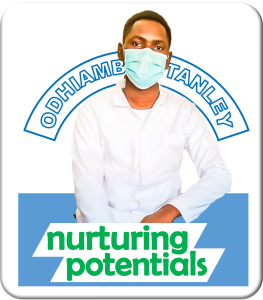Definition of terms
Entomology: It is a science that deals with the study of arthropods in general, and incorporates sciences like zoology,biology, parasitology and micro-biology.
Arthropods: “Arthro” means jointed and “Poda” means legs. Arthropods are invertebrate animals with jointed-legs and identified by their peculiar characteristics.
Medical Entomology: This is a branch of entomology which deals with arthropods which affect the health and well-being of man and vertebrate animals. In other words, medical entomology is the medical science directly concerned with vectors that affect human and animal health. There are also other branches of entomology. For example:
Industrial Entomology/Economical Entomology:
deals with industrially or economically important arthropods (industrial pests).
Agricultural Entomology: - Agricultural pest science dealing with arthropods that affect plants and animals.
Mechanical disease transmission: disease agents are carried from one host to another by arthropods simply mechanically carried by the body parts (example wings, hairs,
feces, vomitus, etc). In this type of disease transmission no change takes place in the number, form or developmental stages of the organism, but simply deposited in the body, food or drink of the host.
Biological disease transmission: the agent will exhibit changes in form and or number of developmental stages in the arthropod before entry to the host. This includes hereditary (transovarian) and transital transmissions: Propagative, cyclodevelopmental and cyclopropagative.
Propagative: In propagative type of disease transmission only the number of pathogens increases and the developmentalstage remain constant. The diseases plague and typhus are good examples of propagative type of disease transmission.
Cyclo-developmental: In this type of disease transmission, only the developmental stage (form) of the disease pathogen is changed (small to big, immature to matured stage, etc.), while the number of the pathogenic organism remains constant. Example Filariasis
Cyclo-propagative: This type of disease transmission is a combination of both propagative and cyclo-developmental; whereby the disease pathogen undertakes a change both in number and developmental form (stage). Example Malaria.
Trans ovarian/ Trans-stadial transmission: It is a type of disease transmission, whereas the causative agent is transmitted to the immature stage (usually to the egg) from the adult insects and / or other arthropods which carry disease pathogens.
When the infected egg completes its developmental stage; it becomes infective or can transmit the disease to man and other animals. Ticks and sand flies are
very good examples of arthropods that exhibit hereditary disease transmission.
Existing public health problems
In tropical countries, the largest groups of illnesses are probably insect-borne. It is therefore, important to know the habits of the insect vectors and how they transmit diseases. It is difficult to implement control measures of insects, without
some knowledge of entomology and specifically medical entomology. To this effect, this course is concerned with the study of arthropods (especially of insects) that are of public health importance.
Due to their occurrence in large numbers in domestic situations, the problems of arthropods include spoiling food and other materials by their feeding habits, causing nuisance and perhaps being involved in the transmission of infectious organisms. Others feed on domestic fabrics and structure of buildings, rendering them unusable or unsound.
Moreover, a wide array of arthropods cause toxic reactions in vertebrates. The cause of intoxication may be direct (bites, stings, defensive secretions) or indirect because of hypersensitivity (allergy).
